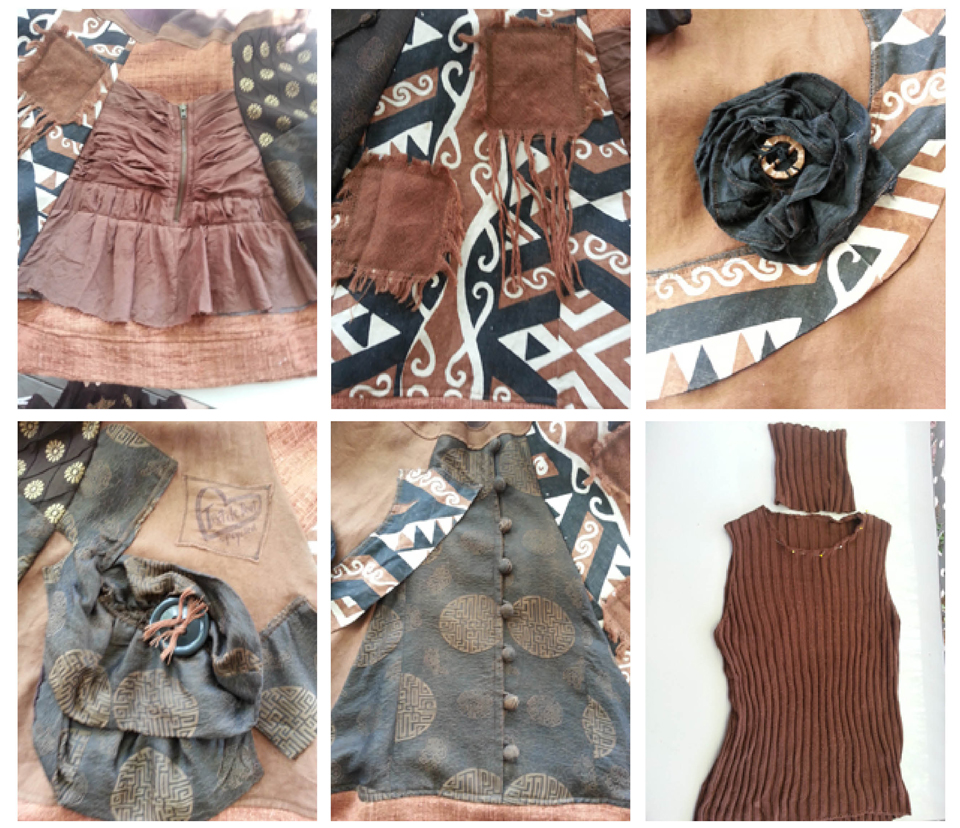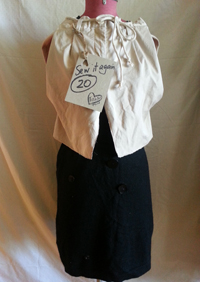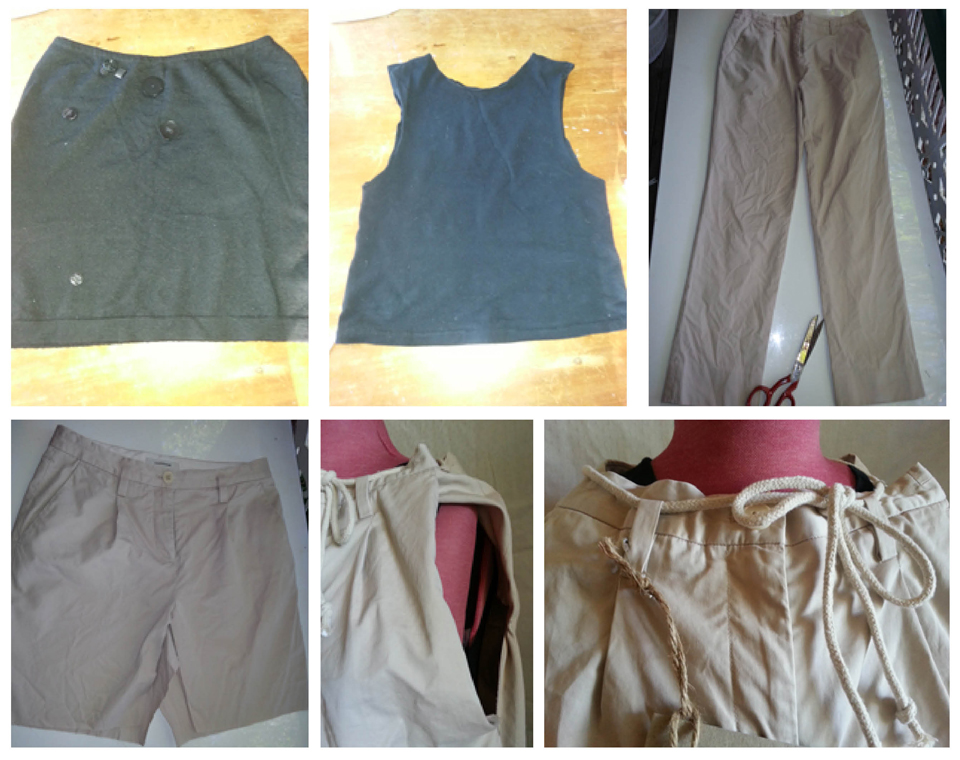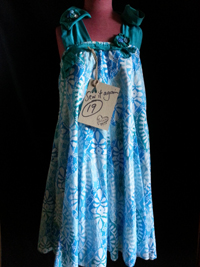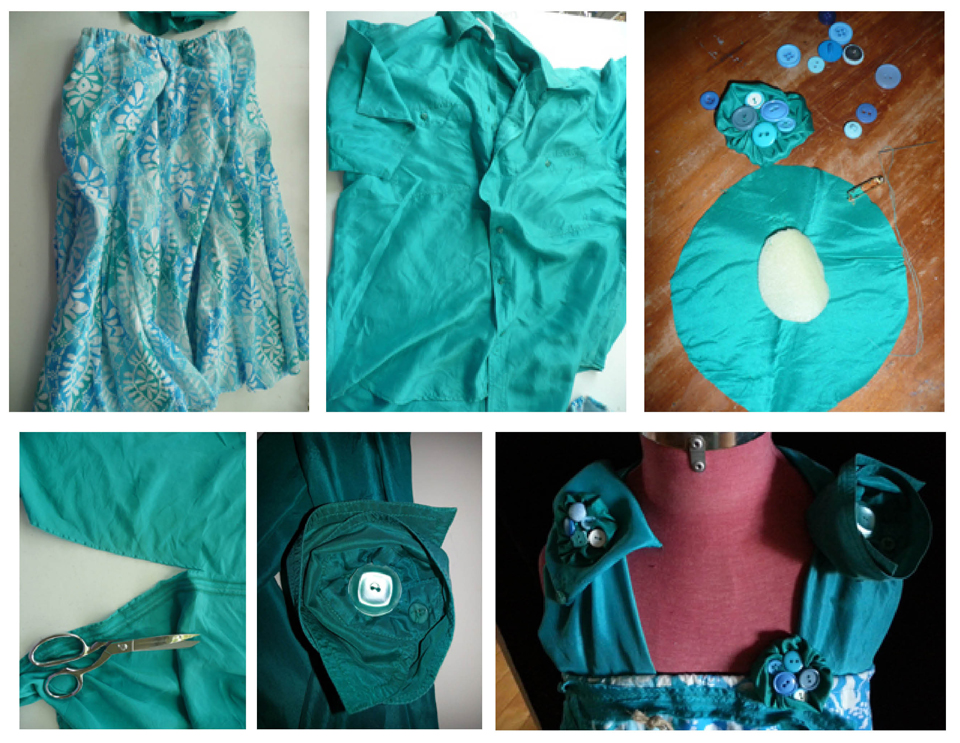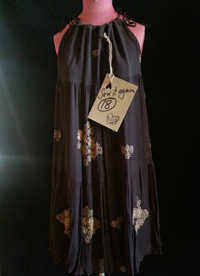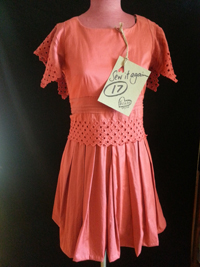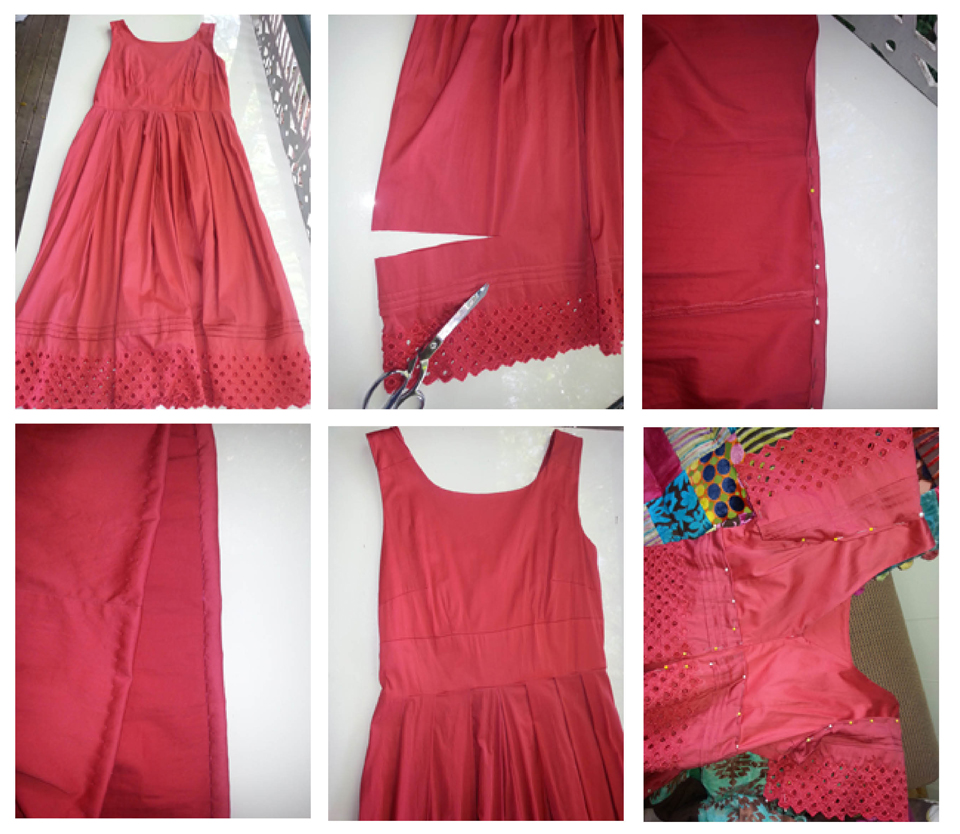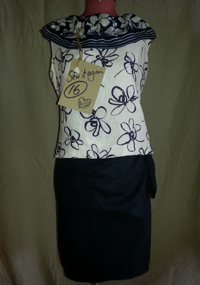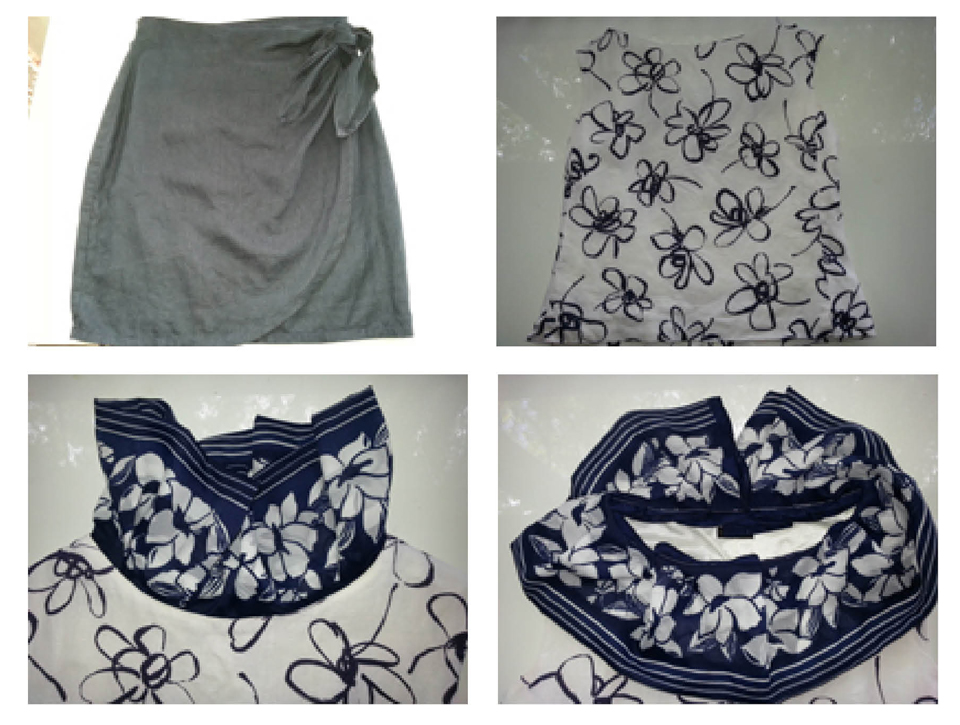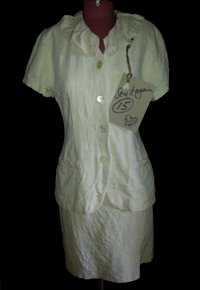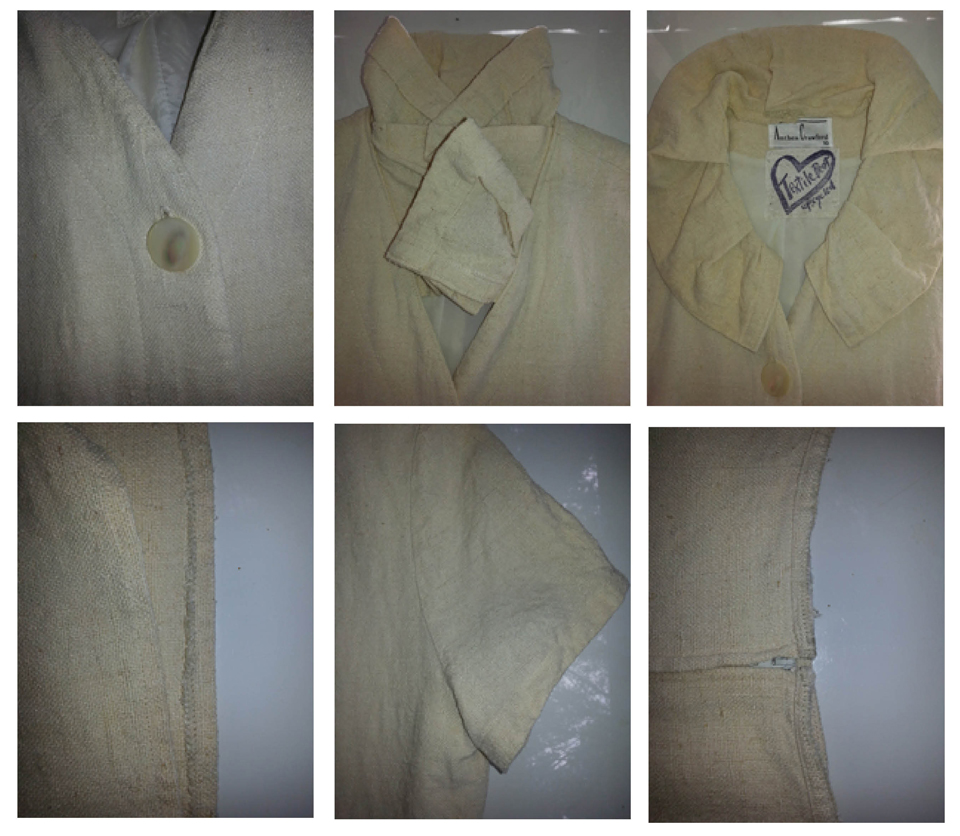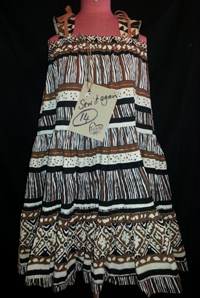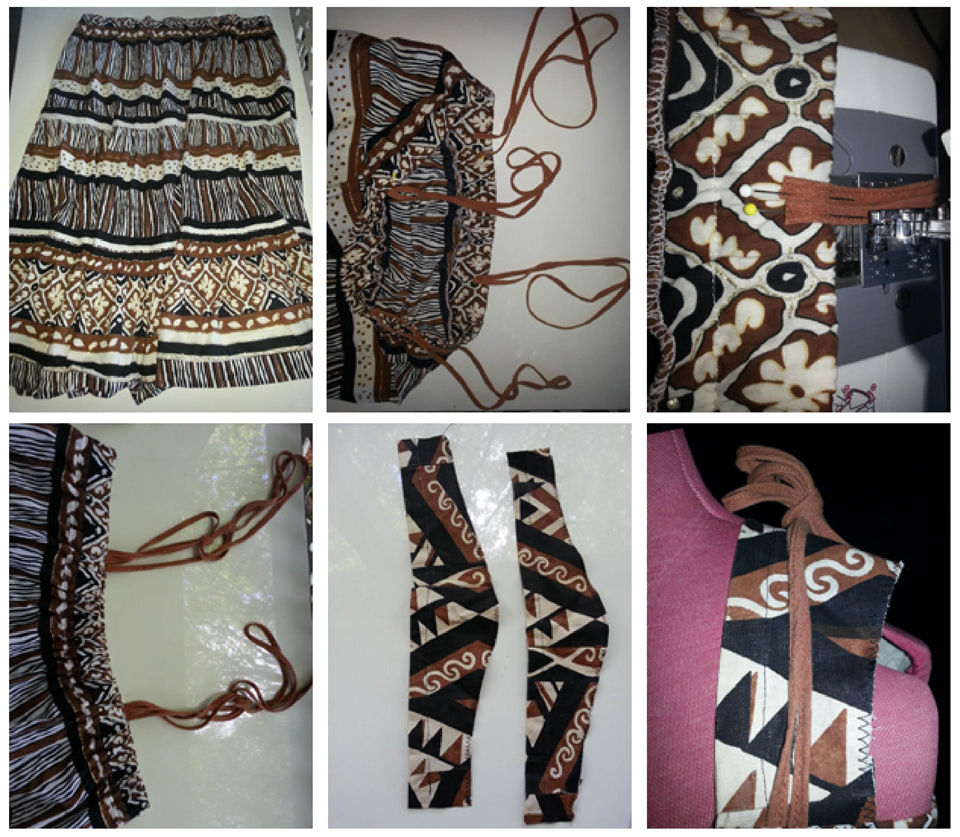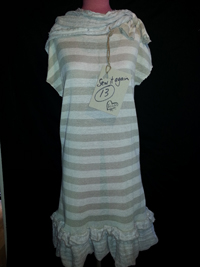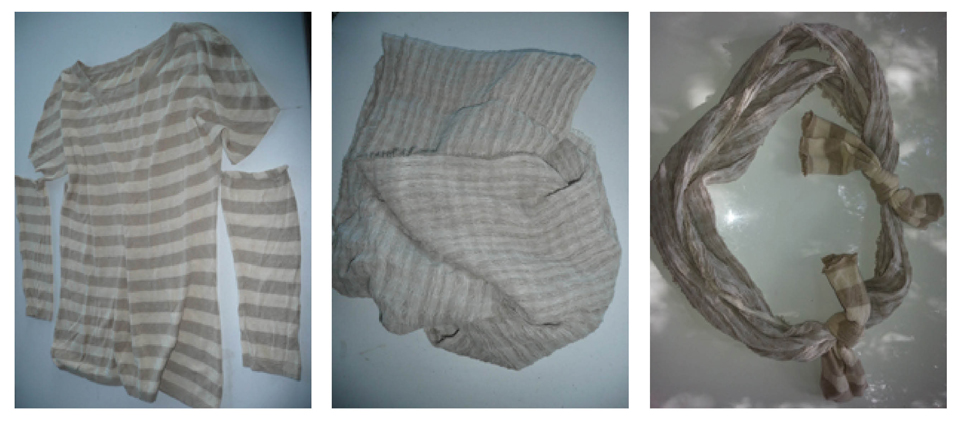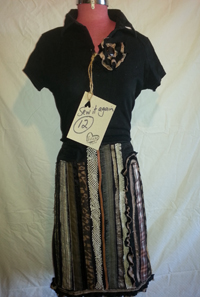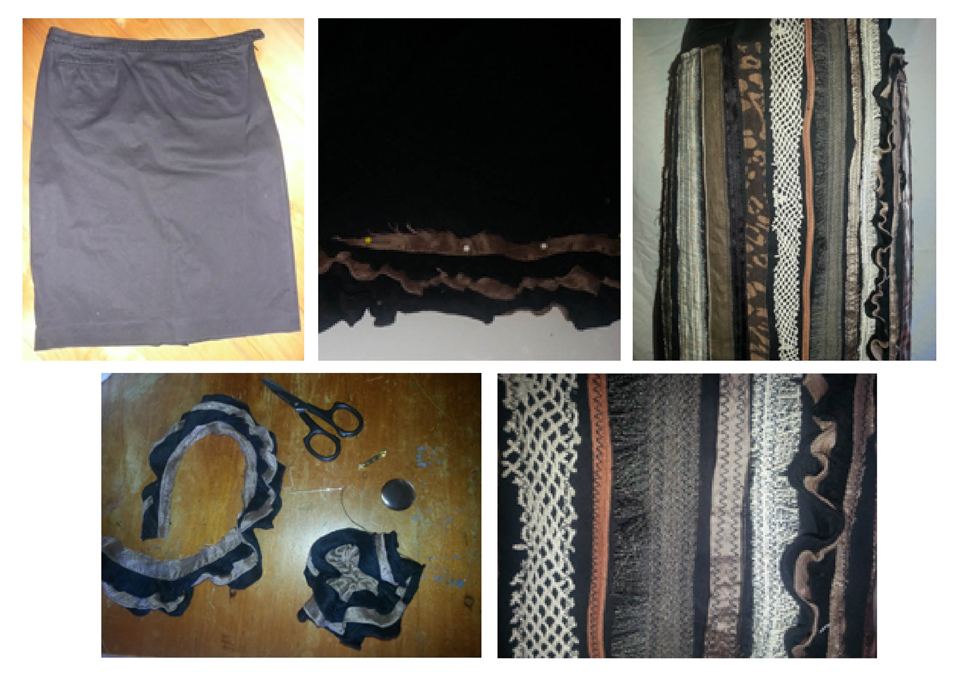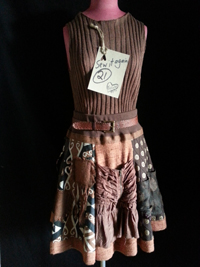 This history skirt is upcycled from five reject garments made of silk, screen-printed cotton, linen and vintage buttons found at opportunity shops during a road trip up the Queensland coast.
This history skirt is upcycled from five reject garments made of silk, screen-printed cotton, linen and vintage buttons found at opportunity shops during a road trip up the Queensland coast.
History skirts are an original design and concept which I created based on a gored skirt pattern. It was inspired by a shirt I bought from the amazingly creative Mary Ede of The Skirt, who is based in Townsville north Queensland.
I wondered what could be done with all the natural fibres, fabrics and found stuff I was rescuing from op shops along the way – and the Textile Beat creative business/social enterprise and this Sew it Again project are results of that wondering.
It is rewarding when people like champion swimmer, expert trainer and stylish dresser (among other things) Lisa Curry support one’s efforts.
Last year, when Lisa Curry stepped into Blackall Cultural Centre while on her Aussie road trip inspiring health and wellbeing, her attention was immediately captured by my history skirts.
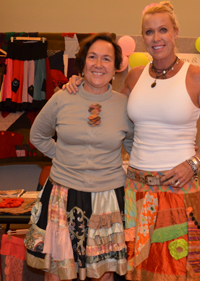 While Lisa’s eyes were drawn to its colour and creativity, her decision to purchase this upcycled natural fibre garment demonstrates support for slow fashion as one small way to boost ecological health and reduce our carbon footprint.
While Lisa’s eyes were drawn to its colour and creativity, her decision to purchase this upcycled natural fibre garment demonstrates support for slow fashion as one small way to boost ecological health and reduce our carbon footprint.
I posted this story of Lisa’s orange and avocado history skirt: “It was handcrafted in Brisbane by Jane Milburn from at least 10 upcycled fabric sources including an Italian linen dress, silk shirt and tie, rayon vest, cotton scarf, floral cotton from Nana’s fabric box, vintage buttons and more.”
I’ve got Col Jackson from Blues Country Magazine to thank for this photo taken at the QRRRWN annual conference, and my Australian Rural Leadership Program colleague Ele Cook from Coolah in New South Wales to thank for helping me follow my heart on this creative journey inspiring the upcycling of natural fibres for pleasure, reward and sustainability.
This chocolate swirl history skirt has several pockets for gadgets and each panel has a feature created from off-cuts. It is brought together by a stretch-knit waistband and hemmed with a border of raw silk. Because the construction is time consuming, it is a labour of love. I’ve teamed this skirt with a knit top from which I removed the roll collar and hemmed with zigzag.
